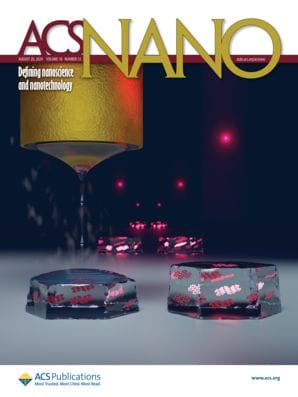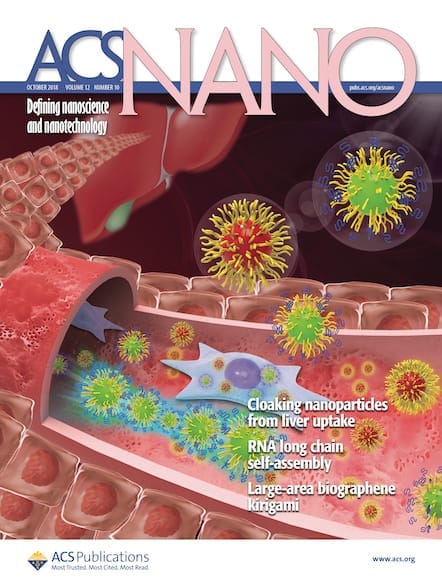A recent study explores acoustofluidics as a means to efficiently and precisely isolate viruses like SARS-CoV-2 from complex samples, highlighting its potential to enhance diagnostics and therapeutics in virology.

Bioassays proved their worth during the COVID-19 pandemic, showcasing their utility in assessing the efficacy and safety of viral therapeutics and vaccines. But existing methods of isolating viruses from complex biological systems such as such as ultracentrifugation and cell culture have multiple processing steps, making them time-consuming and resulting in low yields.1 Alternative approaches have trialled membrane-based technologies for purifying and concentrating viruses, but they come with their own pitfalls.2,3
To fill this gap, a team working in the United States have demonstrated high-resolution acoustofluidic isolation of viruses from complex biological samples via Bessel beam excitation separation technology (BEST).4 Acoustofluidic technologies have attracted much interest as non-contact tools for particle isolation due to their high biocompatibility, versatility, purity, and high yield. Broadly, acoustofluidics is a combination of acoustics—the means to manipulate particles with sound—and microfluidics, which provides the medium and environment for the acoustics to act.5 Plane-wave, focused-beam, and single-phase unidirectional interdigital transducers have all been tested as methods for separating or sorting bioparticles such as cells, extracellular vesicles, and larger organisms, but to the best of our knowledge, no acoustofluidic devices have been reported before as a tool for direct virus isolation. Until now…

Acoustofluidic Virus Isolation via Bessel Beam Excitation Separation Technology
DOI: 10.1021/acsnano.4c09692
In the work published in ACS Nano, the new BEST system was able to isolate viruses using the non-diffractive and self-healing properties of two-dimensional, in-plane acoustic Bessel beams to continuously separate cell-free viruses from biofluids. By tuning the acoustic parameters, the cut-off size of isolated viruses can be easily adjusted to perform dynamic, size-selective virus isolation while simultaneously trapping larger particles and separating smaller particles and contaminants from the sample, achieving high-precision isolation of the target virus. In testing, BEST was able to isolate SARS-CoV-2 from human saliva samples as well as extract Moloney Murine Leukemia Virus from cell culture media, demonstrating its potential in both practical diagnostic applications and fundamental virology research. With high separation resolution, high yield, and high purity, the authors believe BEST is a powerful tool that could play an important role in the development of next-generation viral diagnostics, therapeutics, and vaccines.
Acoustofluidics is being used in several other fields. An open-access article in ACS Biomaterials Science & Engineering describes using a standing surface acoustic wave field to spatially arrange suspended endothelial cells into a designated acoustofluidic pattern—essentially engineering a functional vessel network with specific vessel geometry on a chip.6 This idea could help to promote fundamental research as well as have utility in regenerative medicine.

Making Waves: Removing Microplastics from Water with Sound
Other groups have looked at acoustofluidics for nanoparticle assembly—for example, generating acoustic waves on piezoelectric-thin-film-coated aluminum sheets—demonstrating fluidic actuation diversities with various acoustic wave modes.7 This information could help design high-performance acoustofluidic actuation platforms. A 2024 Review article on layer-by-layer nanoparticle assembly for biomedicine focused on the idea of acoustofluidics, exploring the potential and demonstrated applications, as well as analyzing existing technologies in areas such as cell trapping, cell sorting, and multidimensional particle manipulation.5 The acoustofluidic technology can even be integrated with microfluidic paper-based analytical devices—delivering a low-cost, disposable, and straightforward readout, making it a good analytical substrate for point-of-care biochemical assays.8 This might seemcounterintuitive, since paper is a porous substrate that strongly dissipates acoustic energy, but tests show intriguing and unprecedented performance. The authors note that this may prove useful for uniform colorimetric detection, microparticle or cell enrichment, fluorescence amplification, homogeneous mixing, and nanomaterial synthesis.
References
- Leland, D.S. and Ginocchio, C.C. Role of Cell Culture for Virus Detection in the Age of Technology. Clin. Microbiol. Rev. 2007, 20, 49–78.
- Yeh, Y.-T. et al. Tunable and Label-Free Virus Enrichment for Ultrasensitive Virus Detection Using Carbon Nanotube Arrays. Sci. Adv. 2016, 2, e1601026.
- Jeon, G. et al. Hierarchically Self-Organized Monolithic Nanoporous Membrane for Excellent Virus Enrichment. ACS Appl. Mater. Interfaces 2014, 6, 1200–1206.
- Xia, J. et al. Acoustofluidic Virus Isolation via Bessel Beam Excitation Separation Technology. ACS Nano 2024, 18, 33, 22596–22607.
- Rowland, S. et al. Layer-by-Layer Nanoparticle Assembly for Biomedicine: Mechanisms, Technologies, and Advancement via Acoustofluidics. ACS Appl. Nano Mater. 2024, 7, 14, 15874–15902.
- Wu Y, et al. Acoustofluidic Engineering of Functional Vessel-on-a-Chip. ACS Biomater. Sci. Eng. 2023, 9, 11, 6273–6281.
- Wang, Y. et al. Acoustofluidic Diversity Achieved by Multiple Modes of Acoustic Waves Generated on Piezoelectric-Film-Coated Aluminum Sheets. ACS Appl. Mater. Interfaces 2024, 16, 34, 45119–45130.
- Zhao, X. et al. Acoustofluidics-Assisted Multifunctional Paper-Based Analytical Devices. Anal. Chem. 2024, 96, 1, 496–504.
